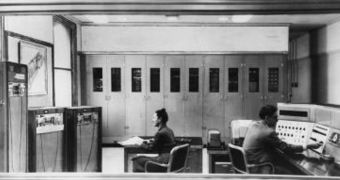National Institute of Standards and Technology (NIST) theorists have recently discovered a new obstacle that has the potential to hinder the development of quantum computers – the fact that software capable of looking for and handling errors that might occur during calculations are more difficult to produce than thought. There are major differences between conventional computers and their quantum counterparts, both in terms of performances and construction, but all the advantages that quantum ones may provide in theory disappear if they are not operating effectively.
As opposed to regular computer processors, which have a number of on/off switches to operate, quantum computers are based on units called quantum bits, or qubits, in short. These remarkable building blocks have the unbelievable ability to exist in both “on” and “off” states at the same time, making use of a quantum physics principle known as “superposition.” If discovered fully and applied correctly, this principle could result in computers able to determine the results of enormous amounts of calculations, without actually performing all of them.
Naturally, the first application that comes to mind is in cryptography, or code-breaking. Modern encryption tools use very complex algorithms to hide data from outside interference, and normal computers are at this point unable to crack these codes within a reasonable amount of time. But, even though quantum computers could do this in significantly reduced operation times, there is currently no way of safe-guarding them from errors that may occur.
That is to say, in regular machines, information is checked and double-checked before being transmitted from a cell to the other. Several copies of the data are made, and each of them analyzed against the other. But, in qubits operations, this redundancy process is impossible, as it would violate a number of quantum physics laws.
Bryan Eastin, an information theorist at NIST, says that one of the ways to prevent quantum processors from interacting with each other when they make errors – so as to avoid a cumulation effect – is to employ those things called “transversal encoded quantum gates,” which filter out the “noise” of the quantum processes. However, more complex solutions have to be added as well, as these gates alone are not sufficient to ensure a smooth functioning of a quantum system based on atomic interactions between its basic cells.

 14 DAY TRIAL //
14 DAY TRIAL //